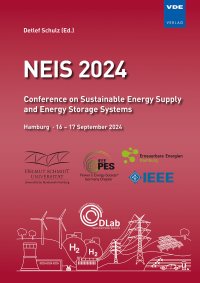Aspects of HVDC Breakers in HVDC Energy Transmission Systems based on self-commutated converter systems
Conference: NEIS 2024 - Conference on Sustainable Energy Supply and Energy Storage Systems
09/16/2024 - 09/17/2024 at Hamburg, Germany
doi:10.30420/566464001
Proceedings: NEIS 2024
Pages: 8Language: englishTyp: PDF
Authors:
Staudt, Volker; Doering, David
Abstract:
High-voltage direct-current (HVDC) energy transmission systems based on self-commutated converter systems play an increasingly vital role when transmitting electric energy. They connect offshore wind farms to onshore grids and assist in wide-area distribution of electric energy. In comparison to grid-commutated HVDC systems, they offer a number of advantages. In the context of this paper, the most prominent advantages are the adjustable reactive power and the ability to operate in multi-terminal voltage-based transmission systems. These properties stimulate the vision to interlink several multi-terminal systems, increasing flexibility and availability – up to the vision of meshed HVDC grids, similar to known AC transmission grids. Compared to well-known assets in conventional AC grids like synchronous generators their control is fast and flexible, but their short-circuit current limit is rather low and secured by control action. Overvoltage may also lead to immediate destruction, it is typically limited by surge arrestors. The most prominent difference between AC and DC transmission lines is their reaction to fault conditions, especially to short-circuit conditions. Such short-circuits have to be mastered. For AC transmission, the impedance resulting from line inductance and frequency limits the short-circuit current and restricts the area affected by the voltage decline. For DC transmission, only the resistance of the line restricts the area affected by the voltage decline. In practice, the whole DC interconnected system, independent of its geographical dimensions, loses transmission capability if no countermeas-ures are taken. The key countermeasure, as in AC systems, is to detect and disconnect the fault-affected section of the system by a suitable breaker. While such breakers are standardized and well known components in AC systems, their realization in case of DC systems is not straightforward. This paper gives an overview of the key options, key aspects to be taken into account and resulting challenges when defining a DC transmission system.


